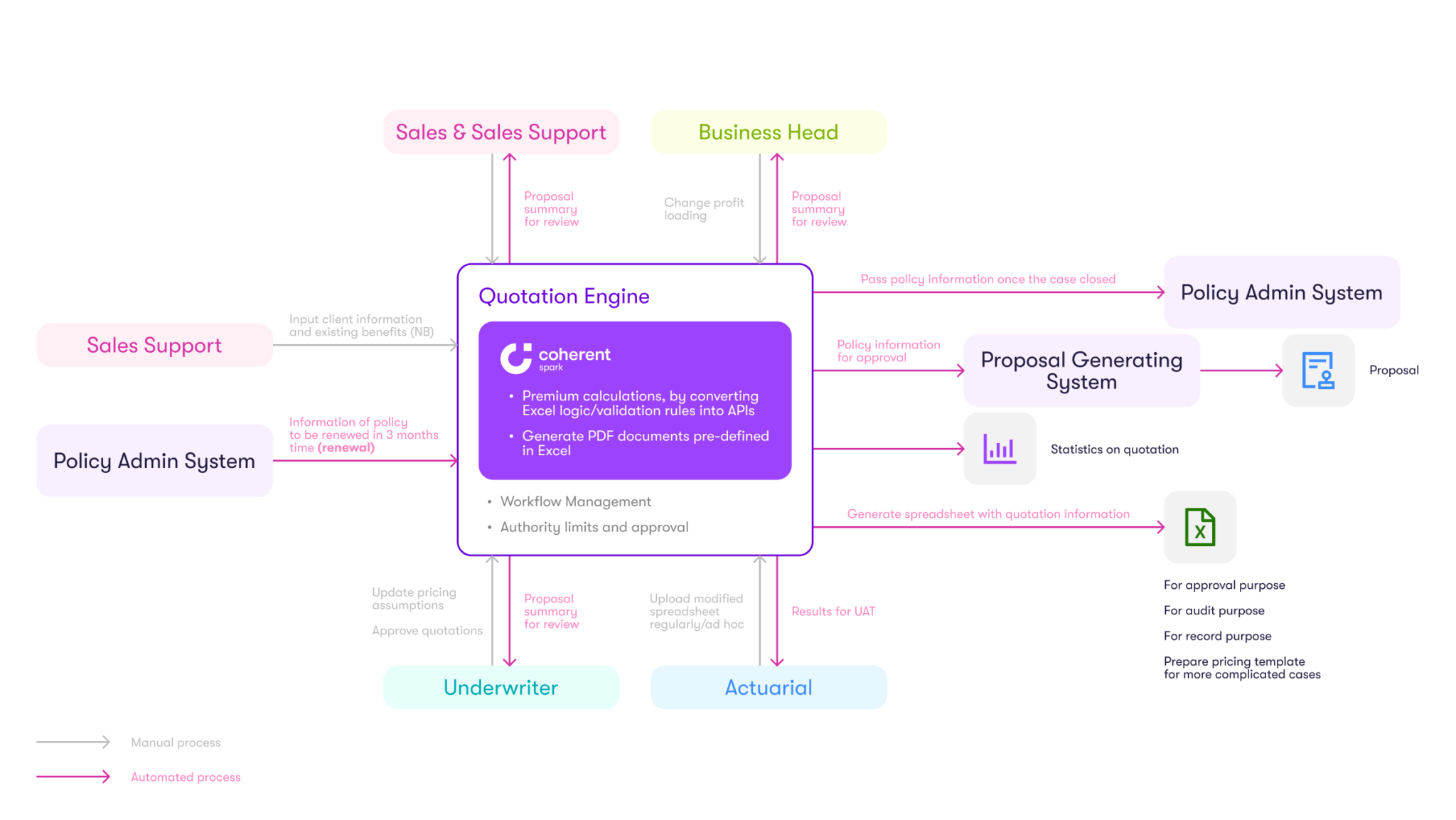Employers buy group insurance to provide protection to their employees and improve staff retention. You probably know the differences between individual insurance and group insurance, but what you may not know is that the quotation processes can be very different.
In this article, I am going to explain the uniqueness of the quotation process of group insurance, and discuss how technology can help improve efficiency and accuracy in this area.
Making a quotation for individual insurance
For individual insurance, after the needs profiling stage, making a quotation is simple. Based on an individual’s age, gender, and chosen benefits, quotation tools will generate corresponding premium rates and benefit projections. Usually, this can be done online directly or by an intermediary with an iPOS tool.
Making a quotation for group insurance
For group insurance, also known as employee benefits, quotation process is more complex. In addition to premium calculations that are based on a specific set of inputs, there is an element of underwriting of the group characteristics in the quotation process, which involves risk assessment by group underwriters or actuaries.
Within an insurance company, a business development team typically works out the desired benefits and collects information from clients. They will then pass all the information to an underwriting team, who will review everything, including the client’s past claims experience. Underwriters will come up with a set of premium rates plus additional terms and conditions if necessary, then pass them back to the business development team to communicate with the client. In some insurance companies, there is also an administration team that organizes the information into more a standardized format to produce a proposal document.
In most cases, what I described above is not a one-way process but involves multiple iterations. For example, the client may ask for alternative benefit proposals, or to waive some of the exclusions, and the quote will need to be revised with additional information provided.
Sometimes, a client may simply ask for a lower premium which requires review of the assumptions, lower the commission rates, and reduce the profit loading. Multiple parties will have input to the quotation process, e.g. a business development team to provide benefits and commission rates, underwriting team to provide assumptions and adjustments, and business head to provide changes in profit loading.
Challenge with group quotation process
Now we are getting closer to the heart of the group quotation process. For most group players in the market, their quotation tool is an Excel spreadsheet! There is no surprise because benefit designed for each client is bespoke (except for some package products sold to SME clients). Developing a quotation system is challenging because system updates will be too frequent, and it will put a huge stress on the company’s IT resources.
For example, video consultation is gaining popularity especially during COVID. Insurers need to update their quotation tool to incorporate calculations on the cost (or saving) for adding video consultation under different medical networks.
Advantages of a group quotation system
Despite the challenges there are a lot of advantages of building a group quotation system.
First, it connects different parties (business development, underwriting, business head, etc.) and allows them to make changes to a quote and retrieve a revised premium directly. This can save a lot of time as a business development team does not need to wait until an underwriting team has updated the Excel spreadsheets. Potentially, this can be further extended to broker/agency portal, where intermediaries can make minor changes to, say, the benefits, given an initial underwriting decision has been confirmed.
At renewal, all policy data and claims experience can be fed to the quotation system, and initial proposals can be generated on the first day of every month. An effective quotation system can also help manage approval processes and authority limits.
While a quotation tool for an individual business is almost a must-have, why do most insurance companies still stick to using Excel spreadsheets for group quotations? This is because unlike individual life insurance, which has a product development schedule, most quotation systems lack the flexibility for frequent updates within a short period of time.
Seamlessly integrate Excel spreadsheets with Coherent Spark
Coherent Spark, a no-code central control platform that turns business logic found in spreadsheets into ready-to-use APIs, can help you solve the issue. When you already have your own group quotation spreadsheet, Spark can take it and convert it into APIs in no time. It does not require the spreadsheet to be written in any prescribed format, and the APIs can connect to and power your group quotation system. When any changes are required, all you need to do is to revise the underlying spreadsheet and reload it to Spark. Spark will take care of the rest, as the API endpoints remain unchanged.
Hope you find this article insightful. At Coherent, our vision is to help you in the insurance industry focus on what you are good at, e.g., pricing and risk assessment, and free up your time from doing ancillary admin work.
Book a demo today.
CC Wong
-
This author does not have any more posts.





